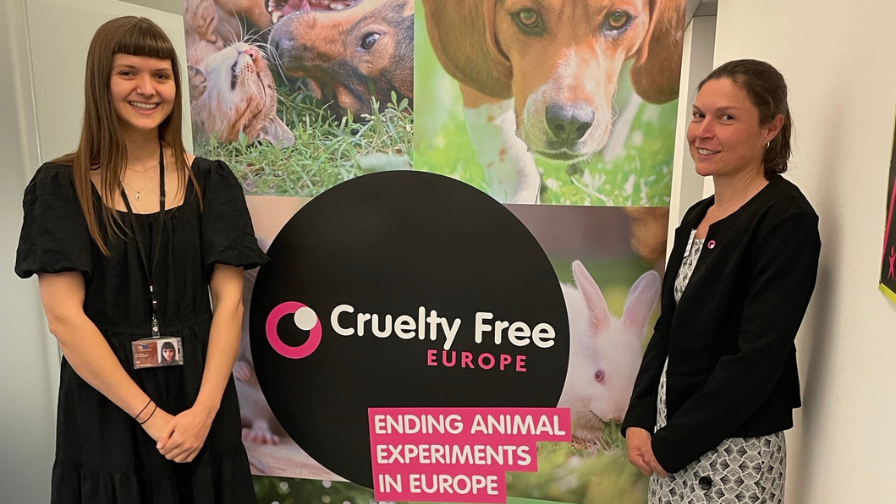We took our updated RAT List to the European Parliament
We hosted a roundtable discussion at the European Parliament last week to highlight how a number of outdated and unnecessary animal tests could be ended immediately, through the RAT (Replace Animal Tests) List, developed by our member organisation, Cruelty Free International.

In a productive roundtable discussion, MEPs, policy experts and Accredited Parliamentary Assistants of MEPs, were shown how ten animal tests – which use over 1.2 million animals every year in the EU – are still conducted despite the availability of appropriate non-animal replacements.
The detailed and well-informed conversation, which covered what the ten tests on animals involve, the barriers to progress, and practical steps to secure change, demonstrated the strength of passion for the subject felt by MEPs. There was a clear desire to overcome the barriers which block the transition away from animal tests, even when a non-animal method is available.
In recent years, the development of non-animal methods has increased significantly, and they can now replace, wholly or in part, a number of tests on animals across several product sectors.
However, our experience has been that actually replacing tests on animals takes much longer than it should. We have seen how non-animal methods available for assessing skin irritation, skin sensitisation and batch safety have taken years to be adopted and we know that tests on animals are still being conducted to provide this information. This is unacceptable.
In many cases, the problem lies with a lack of clarity from, and enforcement by, regulatory authorities, as well as the absence of a joined-up approach for acceptance of non-animal methods around the world. Since non-animal tests can be cheaper, faster and more accurate than the tests on animals they replace, it is in the interests of animal welfare and good science to speed up their acceptance and to expand their use.
Overcoming these remaining hurdles, so that these tests on animals can finally be fully replaced, is a matter of urgency.
The ten tests discussed were for the assessment of skin irritation, skin sensitisation and eye irritation; routine batch testing of veterinary vaccines; potency testing of Botox samples; and the production of antibodies.
Botox batch testing involves injecting Botulinum toxin into the abdomens of mice. Over three days they become increasingly paralysed, and if left the mice given the higher-level dose will slowly suffocate to death. Approximately half of the mice die during the test and all survivors are killed at the end of the test. Over 152,000 of these tests were carried out in the EU in 2022, despite the world’s major Botox manufacturers developing an alternative cell-based test.
At least 1 million animals – including mice, rabbits, sheep, and goats – are used in the EU as ‘factories’ to generate large numbers of antibodies. An injection stimulates the animal’s immune system to produce specific types of antibodies – but this often causes harmful side effects before their blood is taken to harvest the antibodies. Animals are killed when they are no longer useful. Phage display technology – awarded the 2018 Nobel Prize in Chemistry and endorsed in 2020 by the EU Reference Laboratory for alternatives to animal testing – can be used to produce a wide range of antibodies that are of higher quality, more stable, more relevant and more reproducible than the antibodies produced in animals. They are also much faster and cheaper to produce.
See the full RAT (Replace Animal Tests) List on our website.
Our Head of Public Affairs, Dylan Underhill, said: “People may assume that tests on animals which have non-animal replacements available are no longer conducted, or at least rarely – but the reality is that such tests can continue, and even increase long after the adoption of suitable alternative methods. It was great to see MEPs engaging with the issues and statistics behind our RAT List – politicians can play a vital role in overcoming the problems which prevent the adoption of new non-animal tests. This isn’t just about science, it’s about political will too. With the European Union working on its roadmap to phase-out animal testing for chemical safety assessments, ending these ten tests represents a significant but easily-achieved first step towards that aim.”
